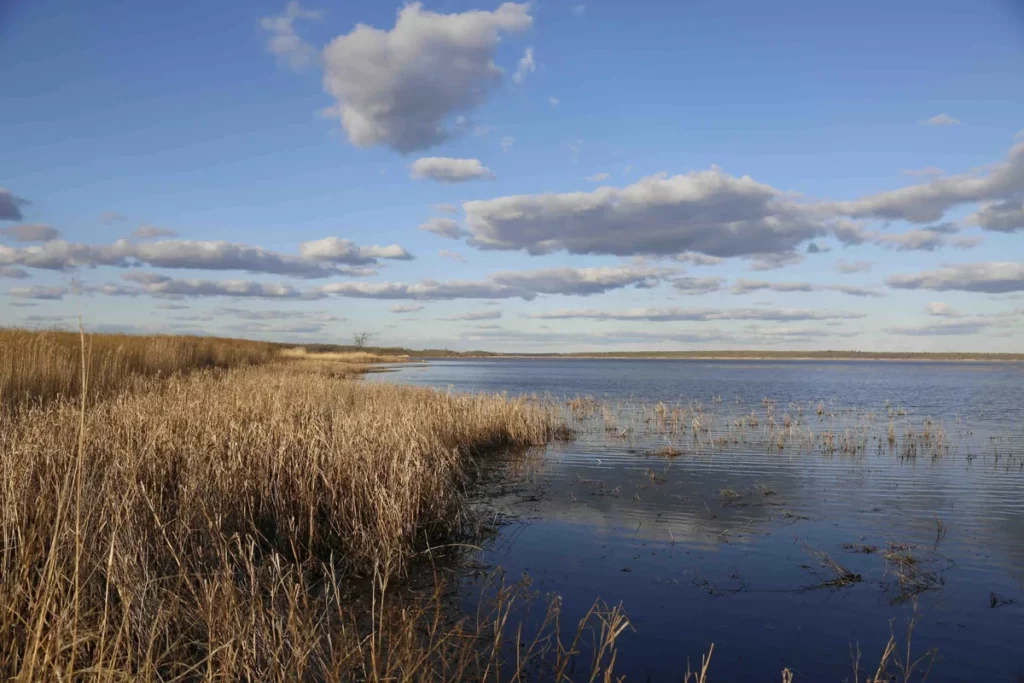
They glide through the water with the serenity of age. Some were born before World War I, others during the Great Depression. In the shallows of Minnesota’s Rice Lake, the bigmouth buffalo fish returns each spring, older than any fish has a right to be.
These are the world’s longest-lived freshwater fish. Some reach 127 years old, a feat previously thought impossible for species like them. They are not just old — they are biological outliers, aging so slowly that researchers describe them as showing “negligible senescence.” In simpler terms: their bodies don’t break down with age.
But this astonishing longevity is masking a looming crisis. Research from 2025 shows that there has not been a new generation for over 50 years at Rice Lake. Despite adult fish returning to their spawning ground every May, mating, and laying eggs that hatch, by late summer, all the young fish are gone. Without young fish, even the most ancient population has an expiration date.
Can This Fish Help Us Solve Aging?
The scientific world first took notice of bigmouth buffalo in 2019, when Alec Lackmann, a fish ecologist at the University of Minnesota Duluth, started slicing into their otoliths — stone-like structures in the inner ear that track age like tree rings.
“The first bigmouth buffalo I aged was almost 90 years old,” Lackmann told The BBC. “I was like, ‘Wow, holy smokes.’ It was hard to believe at first.”
He kept going. Soon, he and his team found fish over 100. One topped out at 127.
That alone would be remarkable. But the surprises didn’t stop there.
In a 2021 study, Lackmann and colleagues examined markers of biological aging in individuals ranging from 2 to 99 years old. They found that telomeres — DNA caps that typically shorten with age — remained stable. Older fish actually had stronger immune systems and lower stress levels than younger ones.
“We’re really not seeing a decline with age in these organisms,” said Britt Heidinger, a biologist at North Dakota State University and co-author of the study.
In the bigmouth buffalo, it seems, age doesn’t necessarily mean deterioration.
This is not to say that other animals can’t achieve remarkably long life spans. Greenland sharks have the greatest longevity of any living vertebrate, reaching at least 250 years old.
Centenarian Fish

Despite spawning in predictable annual cycles, the population at Rice Lake hasn’t successfully produced a new generation in over 60 years. In a survey published in Scientific Reports, researchers analyzed 390 individual fish. Only one was under 50. The median age was 79.
These fish spawn every year, and the eggs are hatching. But by midsummer, all the young are gone.
The likely explanation is predation. Northern pike, a native predator, spawn just before the buffalo, giving their young a deadly head start. By the time buffalo larvae emerge, they’re swimming snacks.
Researchers call this kind of failure recruitment collapse. But the fish themselves have evolved a workaround: live long enough to wait for rare windows when environmental conditions align. This strategy, known as episodic recruitment, hinges on extreme longevity.
In most species, a 60-year reproductive gap would be a death sentence. For the bigmouth buffalo, time is on its side.
But that doesn’t mean they’re safe.
Bigmouth buffalo are native to North America, ranging from Canada’s prairies to the bayous of Louisiana. Despite their long history, they’ve been historically ignored or lumped in with invasive carp species. They’re legal to kill year-round in many states. In Minnesota, where Rice Lake lies, there are no harvest limits. Bowfishers often shoot them in large numbers.
“Oftentimes we’ll find piles of them dumped a short distance away,” said Walt Ford, the Rice Lake refuge manager and a co-author on the recent studies.
The irony is thick. These ancient fish, often mistaken for pests, may hold the biological keys to healthy aging. Yet there is no federal protection. In most of the U.S., there isn’t even basic monitoring.
“It’s one of the oldest populations of animals in the world,” Lackmann told The BBC. “And there’s no management or protection of the species.”
What we don’t know might hurt them

Researchers still know little about the bigmouth buffalo’s basic biology.
“We have very little understanding about the temperature ranges they can tolerate, or how they might respond to climate change,” said Eva Enders, a fish ecologist at the National Institute of Scientific Research in Québec.
That knowledge gap makes protection harder to argue for — and harder to design. It’s a vicious cycle: the fish are ignored because they’re poorly understood, and they remain poorly understood because no one funds the research.
Meanwhile, time ticks on.
With each passing year, the remaining fish grow older. No young have made it in over half a century. If mortality rises — even slightly — the entire population could collapse in a single generation.
The scary thing is that their population stability might just be a mirage.
They have outlived wars, floods, and generations of humans. But they may not survive our indifference.








